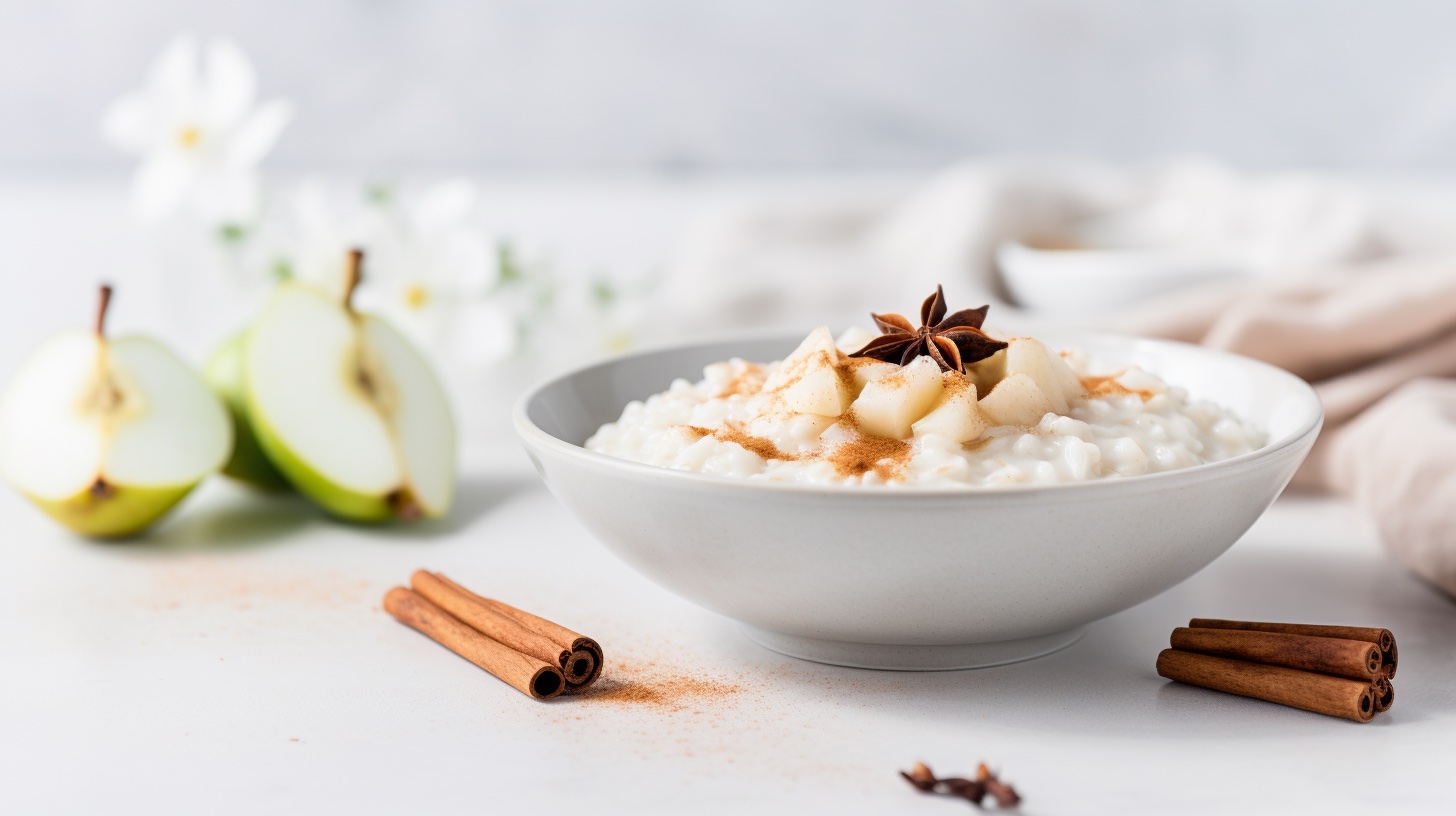Vanilla Rice Pudding with Cinnamon and Fresh Pear
A sweet-toothed culinary enthusiast who lives with histamine intolerance crafted this recipe. She desired a dessert that could satisfy her cravings without triggering her symptoms. Experimenting with simple, fresh ingredients, she created this vanilla rice pudding, finding it so delicious that it became her go-to sweet treat.

Why suitable for low histanmine diet
This recipe is ideal for a low histamine diet as it uses fresh, typically low-histamine ingredients like rice and fresh pear. The homemade pudding avoids common histamine liberators found in many commercial desserts, and the fresh pear adds a refreshing twist.
Ingredients
All the ingredients with the Amazon Fresh logo can be delivered within 2 hours. Just click on the ingredients and get it.
Instructions
- 0In a medium saucepan, combine the rice and almond milk. Bring to a boil over medium heat, then reduce the heat to low, cover, and let it simmer for 20-25 minutes, or until the rice is tender and the milk has been mostly absorbed.
- 1Once the rice is cooked, add the honey, vanilla extract, and cinnamon to the saucepan. Stir well, then continue to cook for another 5-10 minutes, until the pudding thickens to your desired consistency.
- 2Remove the pudding from the heat and let it cool for a few minutes. Serve warm or chilled, topped with fresh diced pear.
Tipps
Choosing the Rice
Short grain white rice is perfect for this recipe because of its starchy content, which gives the pudding a naturally creamy texture. Always remember to rinse the rice thoroughly before cooking to remove any possible histamine triggers.
Selecting the Almond Milk
Almond milk is a great low-histamine alternative to regular milk. However, ensure it's unsweetened and doesn't contain any additives, as these can increase histamine levels.
Sweetening with Honey
Honey is a great natural sweetener that's generally well-tolerated on a low-histamine diet. However, it's always good to test your personal tolerance to honey as this can vary from person to person.
Adding Vanilla Extract
Vanilla extract can provide a lovely flavor to desserts. Opt for pure vanilla extract instead of imitation varieties, which may contain histamine-triggering additives.
Using Fresh Pear
Fresh pears add a burst of freshness to the rice pudding. Make sure the pear is fresh and consumed shortly after cutting to avoid any potential histamine build-up.
Sprinkling Cinnamon
A little bit of cinnamon can go a long way in enhancing the flavor of this dish. However, if you're sensitive to spices, you may want to omit it.
Storing Leftovers
If you have any leftover rice pudding, it's best to consume it within 24 hours and kept in the refrigerator to prevent any histamine build-up.
Nutrition Facts
- Calories210
- Protein3g
- Carbs44g
- Fat2g
- Fiber3g
Remember that everyone's tolerance to histamine can be different, so it's important to pay attention to your body and adjust your diet accordingly. Always discuss dietary changes with a healthcare professional.

